The effects of exercise based on adherence to ACSM recommendations on pulmonary function and quality of life in adults with asthma: a systematic review and meta-analysis
- PMID: 40443451
- PMCID: PMC12119264
- DOI: 10.3389/fphys.2025.1548382
The effects of exercise based on adherence to ACSM recommendations on pulmonary function and quality of life in adults with asthma: a systematic review and meta-analysis
Abstract
Background: Adherence to ACSM exercise guidelines is linked to improved clinical outcomes in asthma patients, yet its effects on pulmonary function and QOL remain unclear. This study aims to comprehensively assess the impact of ACSM-based exercise adherence on lung function and patient-reported QOL in adults with asthma.
Methods: A systematic search of Cochrane, Web of Science, Embase, and PubMed was conducted to review a meta-analysis on exercise regimens with tailored prescriptions for symptomatic bronchial asthma patients. Eligible randomized controlled trials comparing exercise interventions to non-intervention were selected and analyzed using SMD and 95% CI. Study quality was assessed using the revised Cochrane Risk of Bias tool, while Egger's regression and Begg's test evaluated publication bias. Studies were classified based on adherence to ACSM guidelines, and subgroup analyses employed a random-effects model where appropriate to enhance result reliability and interpretability.
Results: A total of 18 studies were included, with 9 classified as high adherence to ACSM guidelines and 9 as low/uncertain adherence. For FVC values were 0.72 (95% CI: 0.02, 1.42) and 0.64 (95% CI: 0.18, 1.11), respectively. The FEV1/FVC ratio was 0.19 (95% CI: -0.30, 0.69) versus 0.16 (95% CI: -0.95, 1.28). QOL scores demonstrated the most pronounced difference, with SMD at 0.85 (95% CI: 0.39, 1.32) for high adherence and 0.07 (95% CI: -0.22, 0.37) for low/uncertain adherence.
Conclusion: This meta-analysis revealed that exercise interventions with high adherence to ACSM guidelines led to greater changes in QOL scores among asthma patients. While the high-adherence group outperformed the low/uncertain-adherence group in FEV1 and FVC, subgroup analysis failed to establish a significant difference. The modest impact on FEV1/FVC was likely influenced by substantial heterogeneity, potentially introducing bias in effect size estimation. Furthermore, the limited number of RCTs and small sample sizes may have undermined statistical power and result reliability.
Systematic review registration: identifier CRD42024553618.
Keywords: ACSM exercise recommendations; bronchial asthma; exercise intervention; health related quality of life; respiratory function.
Copyright © 2025 Li, Zhao, Wei, Wu and Sun.
Conflict of interest statement
The authors declare that the research was conducted in the absence of any commercial or financial relationships that could be construed as a potential conflict of interest.
Figures
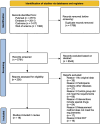

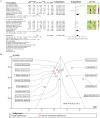

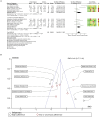
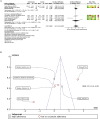

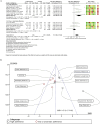

Similar articles
-
The effects of ACSM-based exercise on breast cancer-related lymphoedema: a systematic review and meta-analysis.Front Physiol. 2024 Jul 23;15:1413764. doi: 10.3389/fphys.2024.1413764. eCollection 2024. Front Physiol. 2024. PMID: 39108540 Free PMC article. Review.
-
Folic acid supplementation and malaria susceptibility and severity among people taking antifolate antimalarial drugs in endemic areas.Cochrane Database Syst Rev. 2022 Feb 1;2(2022):CD014217. doi: 10.1002/14651858.CD014217. Cochrane Database Syst Rev. 2022. PMID: 36321557 Free PMC article.
-
Effects of exercise based on ACSM recommendations on bone mineral density in individuals with osteoporosis: a systematic review and meta-analyses of randomized controlled trials.Front Physiol. 2023 Jul 17;14:1181327. doi: 10.3389/fphys.2023.1181327. eCollection 2023. Front Physiol. 2023. PMID: 37528896 Free PMC article.
-
Effects of exercise dose based on the ACSM recommendations on patients with post-stroke cognitive impairment: a systematic review and meta-analyses.Front Physiol. 2024 Jun 3;15:1364632. doi: 10.3389/fphys.2024.1364632. eCollection 2024. Front Physiol. 2024. PMID: 38887320 Free PMC article.
-
Effect of exercise based on ACSM recommendations on blood pressure and heart rate in hypertensive patients: A systematic review and meta-analysis of randomized controlled trials.PLOS Glob Public Health. 2024 Dec 16;4(12):e0003743. doi: 10.1371/journal.pgph.0003743. eCollection 2024. PLOS Glob Public Health. 2024. PMID: 39680548 Free PMC article.
References
-
- Aijun N., Yanqun W., Jinlong L. (2010). Effect of healthy Qigong “WuQinXi” exercise on peripheral blood T-cell subgroups in middle-aged subjects. Afr. J. Biotechnol. 929 (29), 4620–4623.
-
- Ai Thi Hoang K. (2015). The effectiveness of practicing pranayama yoga on some respiratory indicators in patients suffering from bronchial disease. Int. J. Sci. Cult. Sport 3 (10), 6. 10.14486/ijscs245 - DOI
Publication types
LinkOut - more resources
Full Text Sources

